Comfrey is one of the best plants to use anytime you have a sprain, strain, muscle aches or broken bones. The medicinal properties in a comfrey poultice can help speed up recovery.
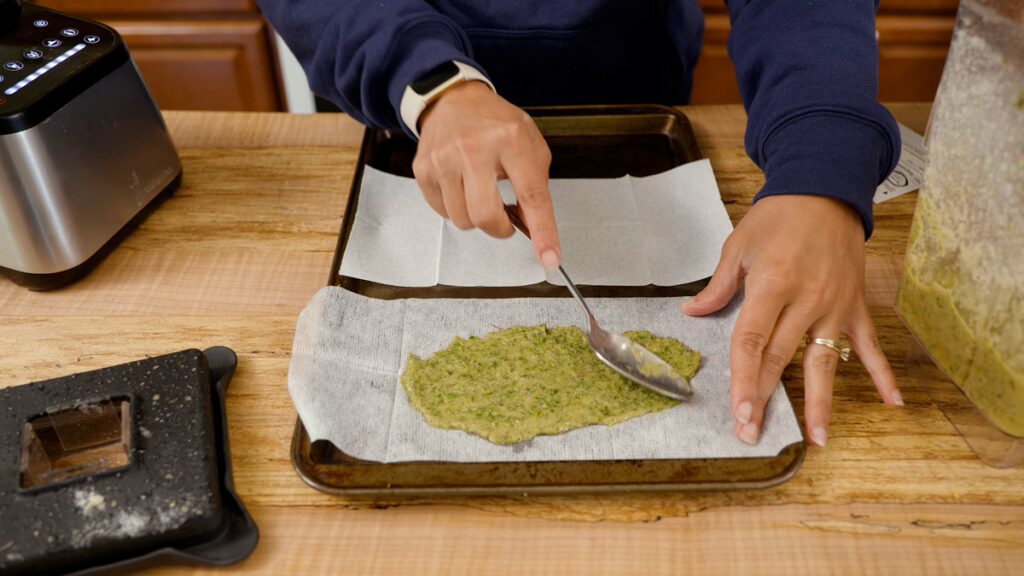
Comfrey (also referred to as Bone Knit) can be grown for multiple reasons. I love it most for its medicinal purposes, but I also plant comfrey as part of my fruit tree guild. The comfrey plant has a very large taproot which draws up minerals from deep within the soil making them available to the fruit tree.
I love knowing I have medicinal herbs growing in my yard that I can grab anytime I need them (learn how to plant a medicinal herb garden).
By growing excess herbs, they're not only beautiful, but I can harvest and preserve them to use all year long.
When my daughter rolled her ankle playing volleyball in the yard, I knew exactly what to do. Having the knowledge of how to use herbal medicine comes in handy during those high-stress times, which is exactly why I created my course called Practical Home Herbalism.
I love having homemade healing salves, homemade calendula oil, or using dandelions (that most people see as a weed) to create a dandelion herbal-infused oil that I can use for so many remedies. And when winter hits? My peppermint salve for dry skin is a lifesaver!

It's so easy to grab the over-the-counter medications we've used for so long, but it's a completely different thing to know and have confidence in using herbal remedies at home. So how do you know what to grab when you get a headache, cough or congestion, upset stomach, or the flu?
In my course, I'll teach you how to listen to your body, how to learn what remedies work best for you, and even how to make them to build up your own herbal medicine cabinet that you can feel confident using for yourself and your family.
The course will be available in the fall of 2023, but for now, you can join the waitlist and get my mini herb course. Then, when doors open for the Practical Home Herbalism course, you'll be the first to know.
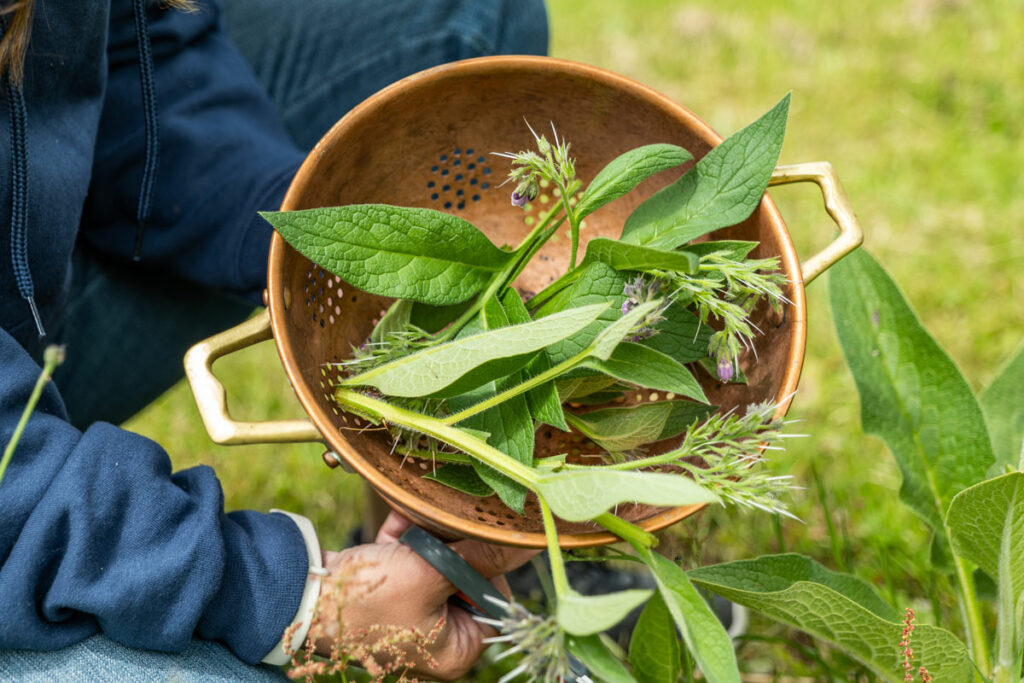
Comfrey (Symphytum officinale) has been used for many years to treat wounds and reduce inflammation from sprains and broken bones.
You must be careful when using comfrey on open wounds as it can heal them so quickly that it can trap infection inside the body. Because wounds naturally heal from the inside out, they will push that infection out as it heals, but comfrey can get in the way of this natural process. Therefore, it's not recommended to use comfrey on deep open wounds or puncture wounds.
The leaves and roots of the comfrey plant contain allantoin, which is a substance that helps new skin cells grow. It also has other substances that reduce inflammation and keep skin healthy.
I love making comfrey ointments and poultices to help heal deep bruising, sprains (like in this video), pulled muscles and ligaments and fractures. A comfrey salve would also be a great medicinal remedy for osteoarthritis.
Pro Tip: Do not use comfrey internally. Though you may see historical uses of comfrey used internally to treat stomach problems, it contains toxic substances called pyrrolizidine alkaloids that damage the liver.
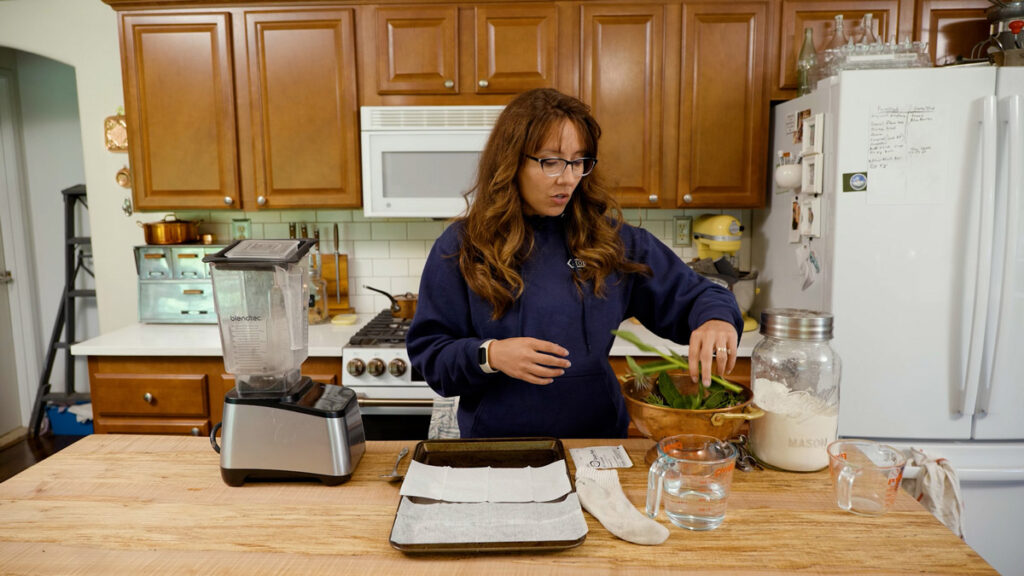
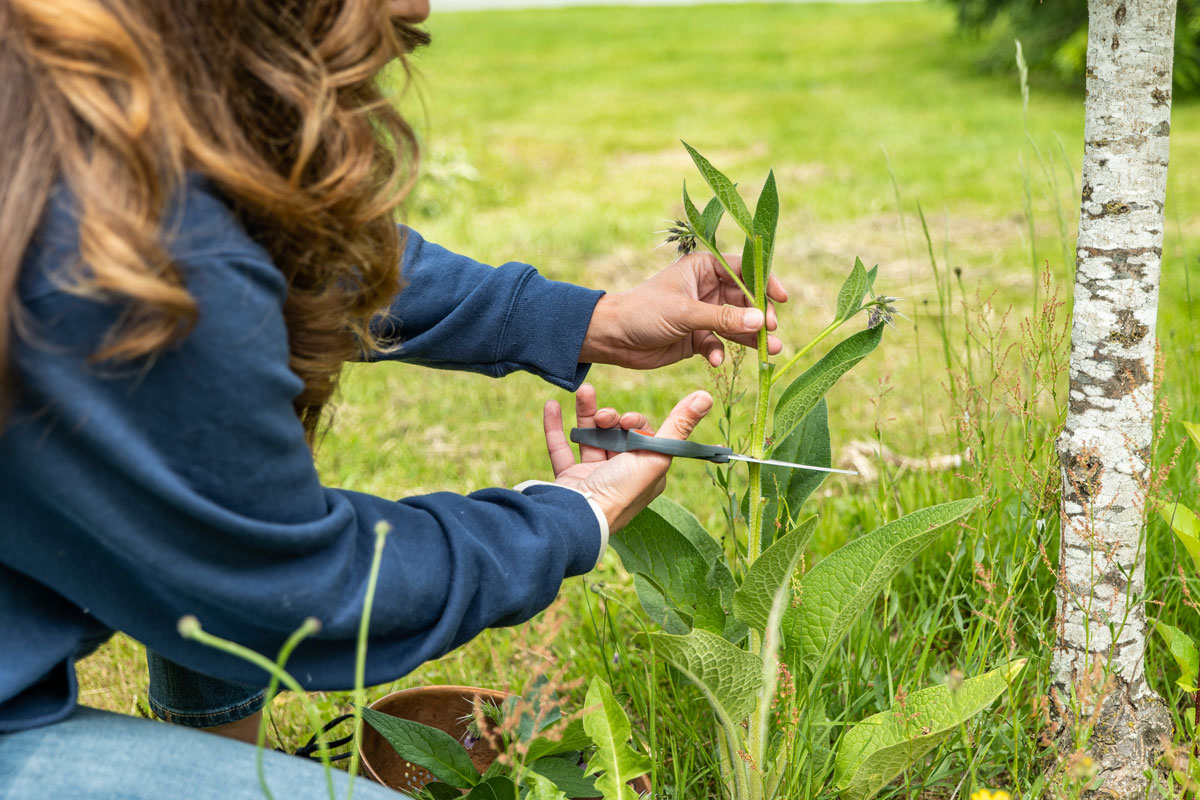
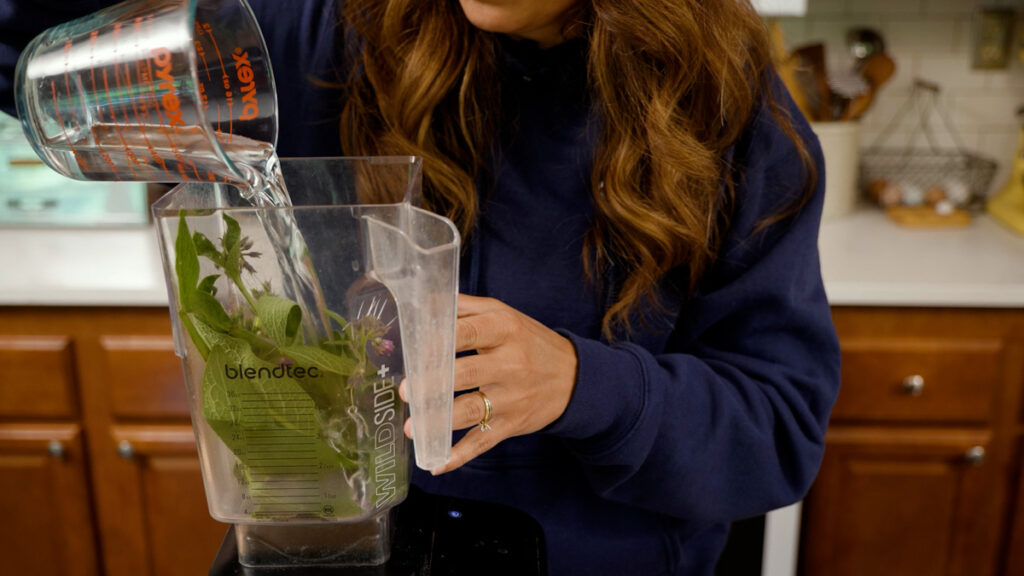

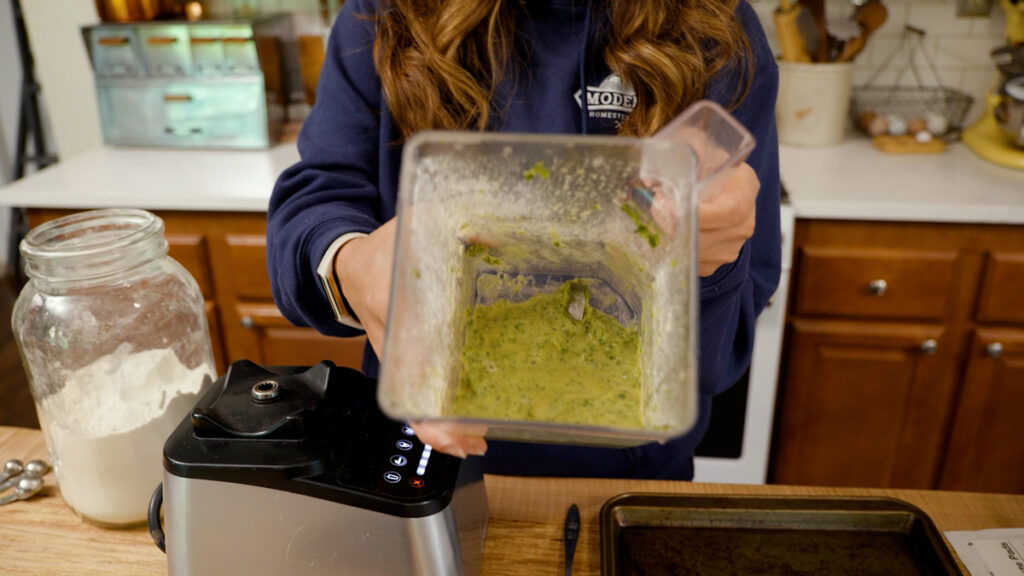

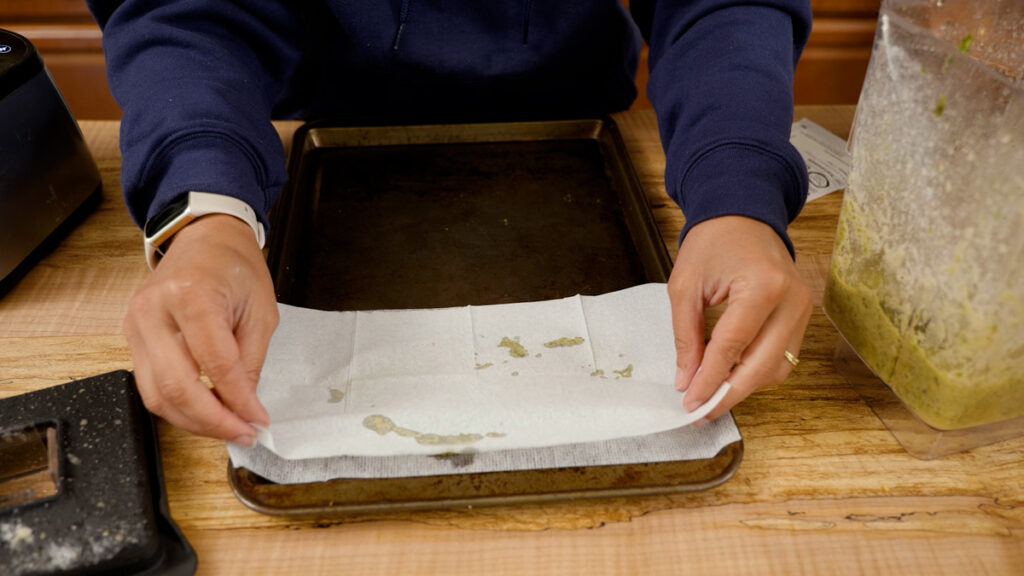
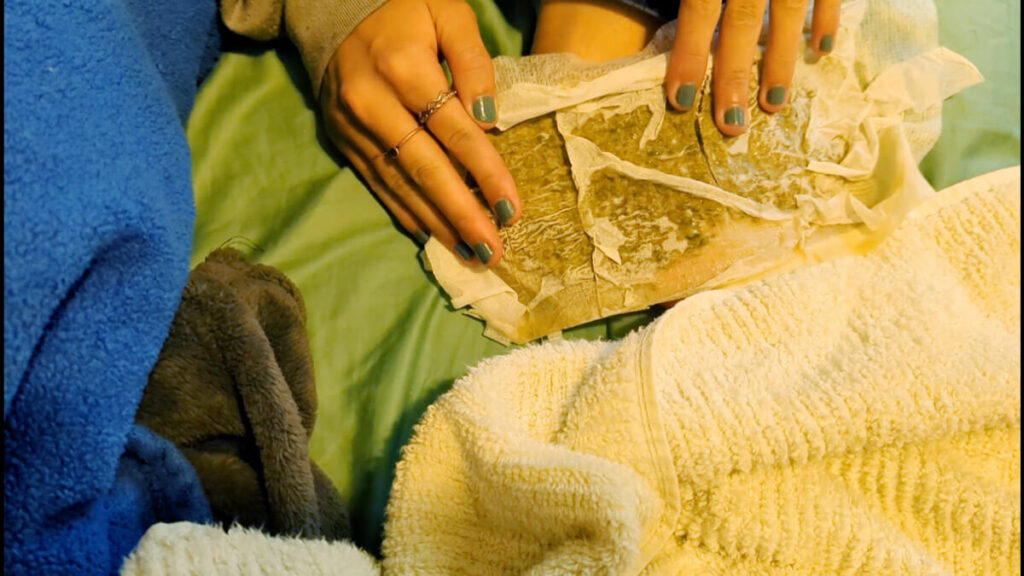
Pro Tip: Make multiple applications ahead of time by following the steps above, then place the poultice-filled gauze into the freezer to flash freeze. Then, transfer the frozen poultice packs to a zip-top baggie until needed. If you don't freeze them, store them in the refrigerator with pieces of wax paper between each poultice pack and use within a few days.
Did you make this remedy? If so, please leave a star rating in the recipe card below. Then snap a photo of your comfrey poultice and tag me on social media @melissaknorris so I can see!
Interested in more hands on learning? Join myself and Dr. Patrick Jones here at Norris Farmstead this September 2023 for a hands-on full day herbal intensive.
And don't forget to sign up for my free mini herb course here!
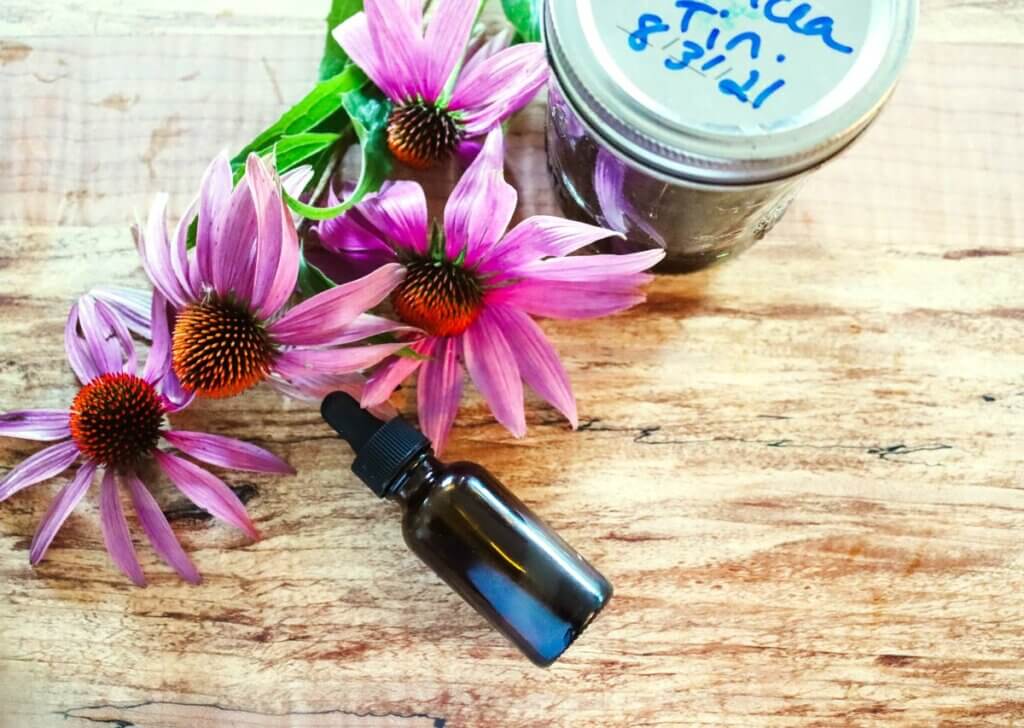
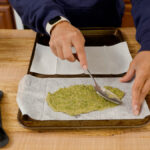
[COLOR=var(--button-color)]
Print[/COLOR]
Author Melissa Norris
The post Comfrey Poultice (For Sprains, Strains & Broken Bones) appeared first on Melissa K. Norris.

Comfrey (also referred to as Bone Knit) can be grown for multiple reasons. I love it most for its medicinal purposes, but I also plant comfrey as part of my fruit tree guild. The comfrey plant has a very large taproot which draws up minerals from deep within the soil making them available to the fruit tree.
Why I Love This Remedy
I love knowing I have medicinal herbs growing in my yard that I can grab anytime I need them (learn how to plant a medicinal herb garden).
By growing excess herbs, they're not only beautiful, but I can harvest and preserve them to use all year long.
When my daughter rolled her ankle playing volleyball in the yard, I knew exactly what to do. Having the knowledge of how to use herbal medicine comes in handy during those high-stress times, which is exactly why I created my course called Practical Home Herbalism.
I love having homemade healing salves, homemade calendula oil, or using dandelions (that most people see as a weed) to create a dandelion herbal-infused oil that I can use for so many remedies. And when winter hits? My peppermint salve for dry skin is a lifesaver!

Practical Home Herbalism
It's so easy to grab the over-the-counter medications we've used for so long, but it's a completely different thing to know and have confidence in using herbal remedies at home. So how do you know what to grab when you get a headache, cough or congestion, upset stomach, or the flu?
In my course, I'll teach you how to listen to your body, how to learn what remedies work best for you, and even how to make them to build up your own herbal medicine cabinet that you can feel confident using for yourself and your family.
The course will be available in the fall of 2023, but for now, you can join the waitlist and get my mini herb course. Then, when doors open for the Practical Home Herbalism course, you'll be the first to know.

What is Comfrey
Comfrey (Symphytum officinale) has been used for many years to treat wounds and reduce inflammation from sprains and broken bones.
You must be careful when using comfrey on open wounds as it can heal them so quickly that it can trap infection inside the body. Because wounds naturally heal from the inside out, they will push that infection out as it heals, but comfrey can get in the way of this natural process. Therefore, it's not recommended to use comfrey on deep open wounds or puncture wounds.
The leaves and roots of the comfrey plant contain allantoin, which is a substance that helps new skin cells grow. It also has other substances that reduce inflammation and keep skin healthy.
I love making comfrey ointments and poultices to help heal deep bruising, sprains (like in this video), pulled muscles and ligaments and fractures. A comfrey salve would also be a great medicinal remedy for osteoarthritis.
Pro Tip: Do not use comfrey internally. Though you may see historical uses of comfrey used internally to treat stomach problems, it contains toxic substances called pyrrolizidine alkaloids that damage the liver.

Supplies Needed
- Gauze: Separate out the gauze pieces. You'll notice one piece has a wider weave which allows more of the poultice to seep through the gauze. Then the other piece is a tighter weave which is great for putting on top of the poultice.
- Cheese Cloth/Muslin: If you don't have access to gauze, you can also use cheesecloth or muslin, but you may need to double up on the layers.
- 100% Cotton Fabric: If you have a 100% cotton sock, tea towel, or even old sheets, you can place some comfrey poultice either into the sock or on a scrap of fabric, then place the sock or fabric over the injured area.
- Blender: You'll also need a high-powered blender to blend the ingredients for the poultice.

Ingredients Needed
- Comfrey Leaves (1.55 ounces/45 grams fresh leaves OR .51 ounces/15 grams dried comfrey) – You can use the flowers, stems and leaves for this poultice. I like to have a combination of each. If you don't have fresh comfrey, you can also use dried comfrey. You can buy organic dried comfrey leaf here.
- 1 Cup Water – Blending the water with the comfrey helps create a slurry. This slurry will then be thickened with a binder.
- 1/4 Cup Binder – If you have bentonite clay, that works well as a binder. You can also use arrowroot powder, cornstarch or regular old flour (which is what I'm using in the video).



How to Make a Comfrey Poultice
- Take the comfrey flowers, leaves and stems and place them into a high-powered blender.
- Add water and add the lid.
- Blend until you're left with a rough puree.
- Add binder (I used flour) and blend again. Check consistency and add more binder, as needed, until you reach a paste consistency (similar to a muffin or cake batter consistency).


Making a Comfrey Poultice Pack
- Separate a large piece of gauze into two pieces.
- On the gauze with the wider weave, spoon on the comfrey poultice. How much you use and how wide you spread it out will be determined based on the injury.
- Cover the poultice with the tight-weaved gauze. This is simply to keep the poultice from running off the gauze.
- You can freeze the gauze to create a healing ice pack (see “pro tip” below for directions) or use it immediately.

How to Use Comfrey Poultice
- Place the gauze with the poultice over the injured area and let it sit for at least 10 minutes, up to several hours (or overnight).
- Use a towel to keep the liquid from dripping onto the surface below.
- Apply three times a day, reducing the applications as the injury heals.
Pro Tip: Make multiple applications ahead of time by following the steps above, then place the poultice-filled gauze into the freezer to flash freeze. Then, transfer the frozen poultice packs to a zip-top baggie until needed. If you don't freeze them, store them in the refrigerator with pieces of wax paper between each poultice pack and use within a few days.
Did you make this remedy? If so, please leave a star rating in the recipe card below. Then snap a photo of your comfrey poultice and tag me on social media @melissaknorris so I can see!
Interested in more hands on learning? Join myself and Dr. Patrick Jones here at Norris Farmstead this September 2023 for a hands-on full day herbal intensive.
And don't forget to sign up for my free mini herb course here!

More Posts You May Enjoy
- Herbal Infused Oil
- 29 of the Best Elderberry Recipes
- How to Grow Elderberries & Planting Tips
- Herbal Home Remedies for Cold and Flu
- How to Use Herbs and Natural Remedies At Home
- Herbal Remedies for Animals (Pets & Livestock)
- Echinacea Tincture – How To Make It & Use It
- Herbal Medicinal Tea (How to Make Your Own)
- Natural Remedies and Recipes to Repel Bugs
- The Truth About Essential Oils and How to Stay Safe
- 5 Tips to Harvest Herbal Flowers for Medicinal Purposes
- How to Grow an Herbal Tea Garden
- Foraging for Wild Medicinal Herbs
- Alternative Medicine & What to Do if Your Medicine Isn’t Available
- The Link Between Honeybees & Plant Medicine

[COLOR=var(--button-color)]
Print[/COLOR]
Comfrey Poultice
Author Melissa Norris
Equipment
- Gauze Separate out the gauze pieces. You'll notice one piece has a wider weave which allows more of the poultice to seep through the gauze. Then the other piece is a tighter weave which is great for putting on top of the poultice.
Cheese Cloth/Muslin: If you don't have access to gauze, you can also use cheesecloth or muslin, but you may need to double up on the layers.
100% Cotton Fabric: If you have a 100% cotton sock, tea towel, or even old sheets, you can place some comfrey poultice either into the sock or on a scrap of fabric, then place the sock or fabric over the injured area. - Blender A high-powered blende
Ingredients
- 45 grams Comfrey Leaves (1.55 ounces/45 grams fresh leaves OR .51 ounces/15 grams dried comfrey)
- 1 cup Water
- ¼ cup Binder If you have bentonite clay, that works well as a binder. You can also use arrowroot powder, cornstarch or regular old flour (which is what I'm using in the video).
Instructions
How to Make a Comfrey Poultice
- Take the comfrey flowers, leaves and stems and place them into a high-powered blender.
- Add water and add the lid.
- Blend until you're left with a rough puree.
- Add binder (I used flour) and blend again. Check consistency and add more binder, as needed, until you reach a paste consistency (similar to a muffin or cake batter consistency).
Making a Comfrey Poultice Pack
- Separate a large piece of gauze into two pieces.
- On the gauze with the wider weave, spoon on the comfrey poultice. How much you use and how wide you spread it out will be determined based on the injury.
- Cover the poultice with the tight-weaved gauze. This is simply to keep the poultice from running off the gauze.
- You can freeze the gauze to create a healing ice pack (see "pro tip" below for directions) or use it immediately.
The post Comfrey Poultice (For Sprains, Strains & Broken Bones) appeared first on Melissa K. Norris.
